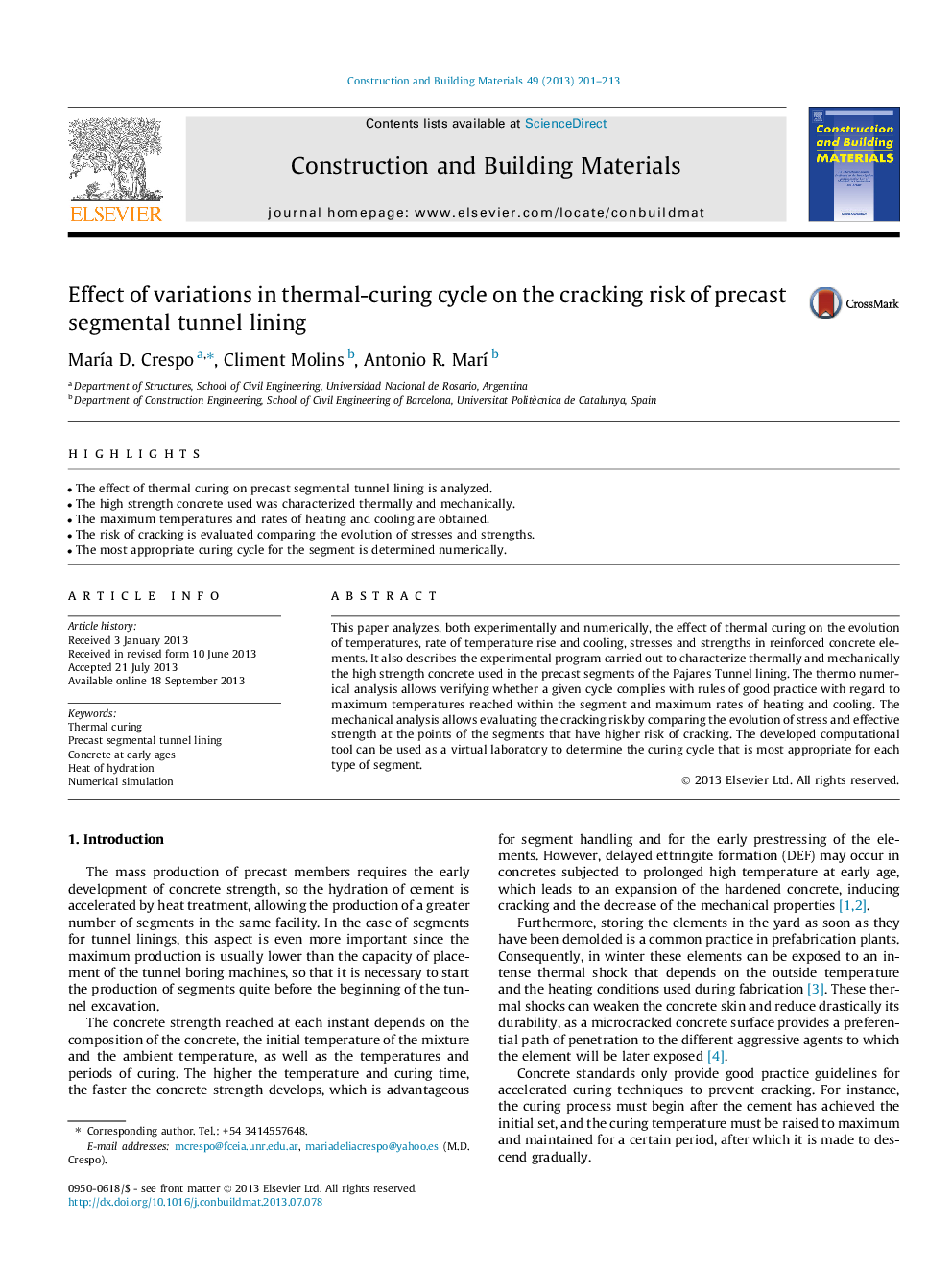| Article ID | Journal | Published Year | Pages | File Type |
|---|---|---|---|---|
| 6724754 | Construction and Building Materials | 2013 | 13 Pages |
Abstract
This paper analyzes, both experimentally and numerically, the effect of thermal curing on the evolution of temperatures, rate of temperature rise and cooling, stresses and strengths in reinforced concrete elements. It also describes the experimental program carried out to characterize thermally and mechanically the high strength concrete used in the precast segments of the Pajares Tunnel lining. The thermo numerical analysis allows verifying whether a given cycle complies with rules of good practice with regard to maximum temperatures reached within the segment and maximum rates of heating and cooling. The mechanical analysis allows evaluating the cracking risk by comparing the evolution of stress and effective strength at the points of the segments that have higher risk of cracking. The developed computational tool can be used as a virtual laboratory to determine the curing cycle that is most appropriate for each type of segment.
Related Topics
Physical Sciences and Engineering
Engineering
Civil and Structural Engineering
Authors
MarÃa D. Crespo, Climent Molins, Antonio R. MarÃ,
